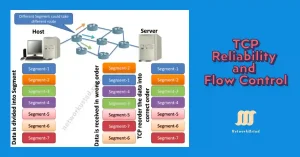Master TCP Reliability and Flow Control With our Exclusive Guide (Updated 2025)
Transmission Control Protocol (TCP) accepts data, segments it into chunks with headers, and encapsulates these into IP datagrams for peer exchange. TCP Reliability and Flow Control ensure complete, ordered delivery on Windows or Linux, critical for 2025 networks as of July 2025. TCP Reliability The TCP segments will possibly arrive at their destination out of […]

